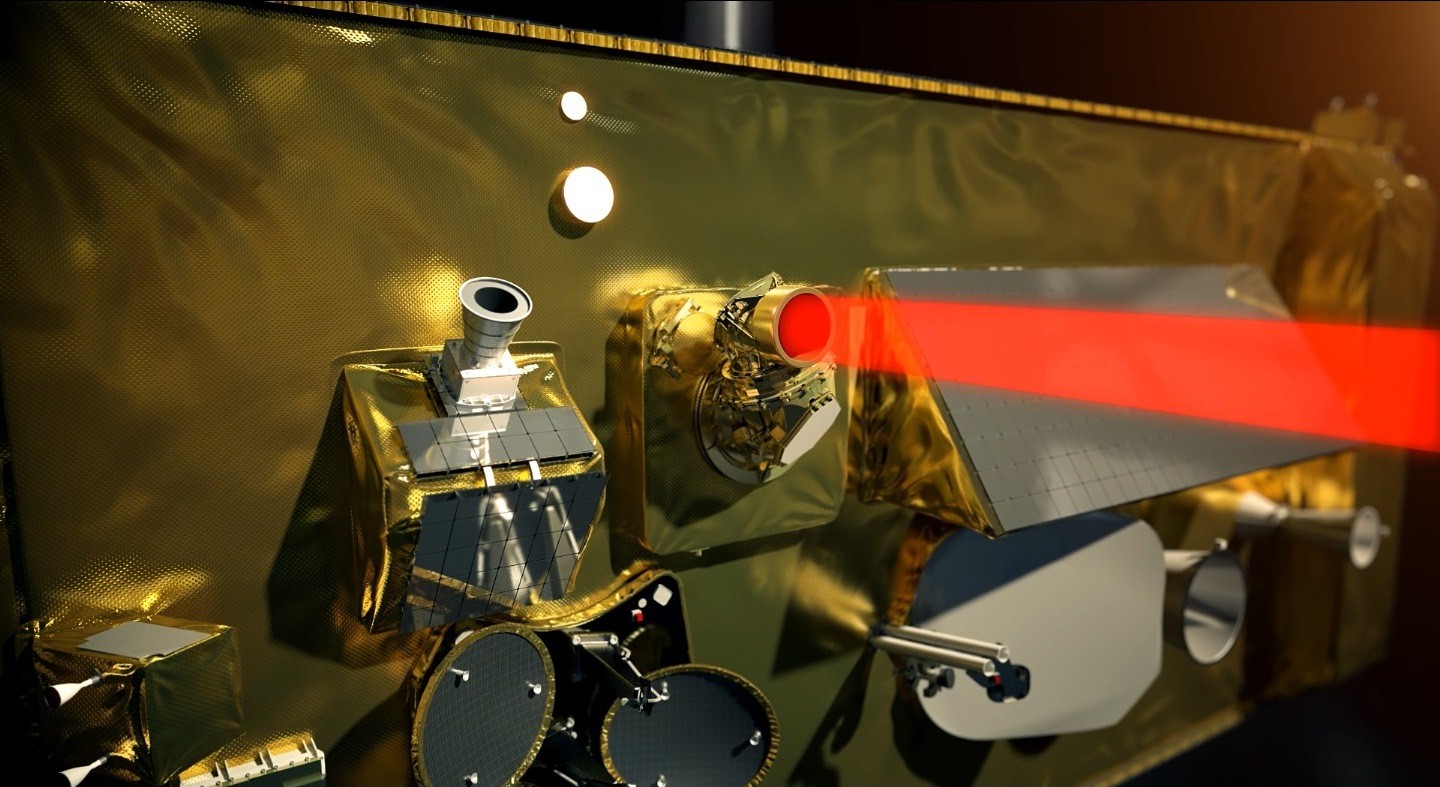7 years of successful in-orbit operations for ESA Telecoms’ Hosted Payloads on-board Alphasat
Providing exceptional value for in-orbit technology demonstration at a minimal expenditures, ESA’s Hosted Payloads will have clocked 7 years of continuous operations in-orbit at the end of 2020. At the forefront of laser and Q/V band communications, the Hosted Payloads demonstrate ESA’s Partnership Projects ability to develop, implement and validate innovative end-to-end systems.
 The Laser Communication Terminal, developed by TESAT under DLR funding, has been the pathfinder for optical inter-satellite and space-ground communication. It has been extensively used for the commissioning of the Laser Communication terminals embarked on the Copernicus Sentinels satellites.
The Laser Communication Terminal, developed by TESAT under DLR funding, has been the pathfinder for optical inter-satellite and space-ground communication. It has been extensively used for the commissioning of the Laser Communication terminals embarked on the Copernicus Sentinels satellites.
Building upon these successes, the Laser Communication Terminal still provides a unique in-flight testbed for the characterization and optimisation of the performances of optical inter-satellite communication links and an unprecedented opportunity for atmospheric studies. Tests of the utilization of optical communication links from Alphasat for various applications, including communications with Remotely Piloted Aircrafts (RPAs), optical feeder links (up and downlinks) are also in the menu for the on-going second mission extension.
Aldo Paraboni Payload, the Q/V Band Payload developed by Airbus Italy and Thales Italy under ASI funding has been attracting an ever-increasing level of attention for the results of its communications and propagation experiments involving more than 15 institutions and 25 ground stations.

The 3 main communications ground stations in northern Italy, southern Italy and Austria are providing the possibility to obtain a high reliable characterization of the Propagation Impairments Mitigation Techniques (PIMT) as required in the future for commercial systems. The 9 years of operations that will be reached at the end of the current operations extension phase will provide the longer-term measurements required to better characterize the propagation statistics of a site and eventually to observe possible climate change effects on propagation.
Jena-Optronik GmbH (DE) Active Pixel Sensor (APS) Star Tracker for accurate and autonomous attitude acquisition is also operational on-board Alphasat, providing the required attitude data to the Laser Terminal. Its flawless performance, continuously monitored over 7 years, has boosted sales on the world market of this unit, with almost 100 already in orbit. The further extension of its mission is permitting to observe the long-term behaviour of the new generation Star Tracker, completing the characterisation over (almost) an entire solar cycle.
Still going strong after 7 years, Alphasat TDPs are continuing to provide a reliable and effective way to maximise the mission return, establishing an exemplary case and a precedent for hosted payloads exploitation on-board ESA Partnership Projects.


